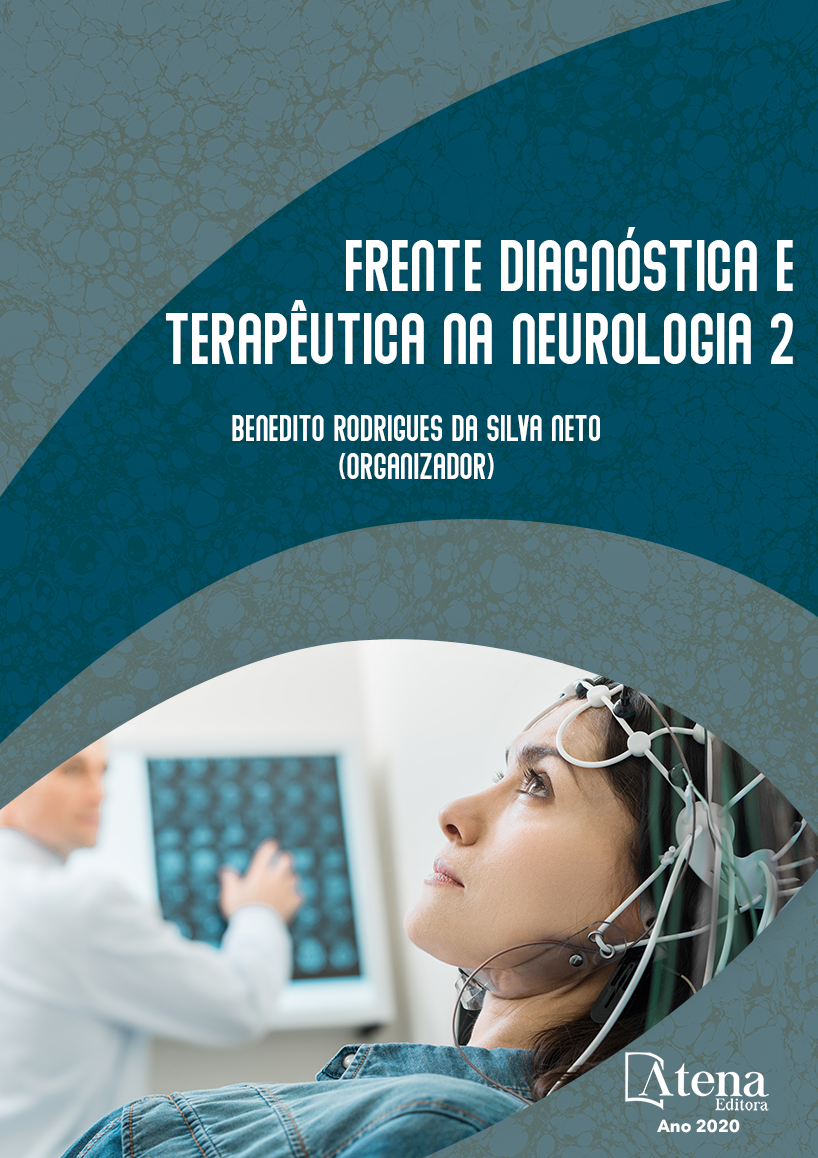
RELATO DE CASO - DOENÇA DE WILSON COM EVOLUÇÃO ATÍPICA
15 anos, masculino, estudante, natural de Maceió, Alagoas. Apresenta quadro de sialorreia, disfagia e disartria. Evoluiu insidiosamente para tremor em repouso intermitente, unilateral em dimídio direito e rigidez plástica em dimídio esquerdo, afasia, retrocólis, distonia em membros superiores e distonia oromandibular. Apresenta também anel com pigmento marrom-esverdeado na periferia da córnea, em toda sua circunferência, de ambos os olhos. Há relato de consanguinidade na família (pais consanguíneos). Ao exame da lâmpada de fenda constatou-se a presença dos anéis de Kayser-Fleischer (K-F). Dosagem de ceruloplasmina de 6,0mg/dL, cobre sérico de 92,0mg/dL, AST 27,0U/l e ALT 10,0 U/l. Apresenta ressonância nuclear magnética de encéfalo com lesões focais simétricas e bilaterais comprometendo os globos pálidos, putâmens, porções ventrolaterais dos tálamos, pedúnculos cerebrais, porções central e tegmento pontinos e pedúnculos cerebelares médio. Discussão: A Doença de Wilson é uma doença hereditária com transmissão autossômica recessiva. O início do quadro e as manifestações clínicas apresentadas corroboram com a literatura. Manifestações hepáticas são frequentes, no entanto não foi encontrada neste caso. A consanguinidade é exposta na grande maioria dos casos, e também está presente na história do paciente. Os achados de imagem indicam um grande acometimento dos gânglios da base, justificando a vasta clínica neurológica apresentada. Conclusão: A DW caracteriza-se por distúrbio metabólico com acúmulo de cobre nos tecidos humanos, principalmente no fígado com manifestações hepáticas, não encontradas neste relato, configurando uma apresentação atípica desta doença.
RELATO DE CASO - DOENÇA DE WILSON COM EVOLUÇÃO ATÍPICA
-
DOI: 10.22533/at.ed.56120280123
-
Palavras-chave: Doença de Wilson, Parkinsonismo, Distúrbio do metabolismo do cobre.
-
Keywords: Wilson’s disease, Parkinsonism, Cooper metabolismo disorder
-
Abstract:
Report: 15 years old, male, student, born in Maceió, Alagoas. Presents sialorrhea, dysphagia and dysarthria. It evolved insidiously to intermittent, unilateral right dimid tremor and left stiff plastic restraint, aphasia, retrocholis, upper limb dystonia and oromandibular dystonia. It also has a ring with greenish-brown pigment in the circumference of the cornea, in all its circumference, of both eyes. There are reports of inbreeding in the family. The slit lamp examnation was checked for Kayser-Fleischer (KF) rings. Ceruloplasmin dosage of 6.0 mg/dL, serum copper of 92.0 mg/dL, AST 27.0U/ l and ALT 10.0 U/ l. Presents magnetic nuclear resonance imaging of the brain with symmetrical and bilateral focal lesions compromising the pale globes, putamens, ventrolateral portions of the thalamus, cerebral peduncles, central and tegmental portions of pontinos, and middle cerebellar peduncles. Discussion: Wilson's disease is an inherited disease with autosomal recessive transmission. The onset of the condition and the clinical manifestations presented corroborate the literature. Liver manifestations are common, however not found in this case. Inbreeding is exposed in the vast majority of cases, and is also present in the patient's history. The imaging findings indicate a large involvement of the basal ganglia justifying the the vast clinic presented. Conclusion: WD is characterized by metabolic disorder with copper accumulation in human tissues, especially in liver with liver manifestations, not found in this report, constituting an atypical presentation of this disease.
-
Número de páginas: 9
- André Limeira Tenório de Albuquerque
- Mariana Reis Prado
- Rawanderson dos Santos


